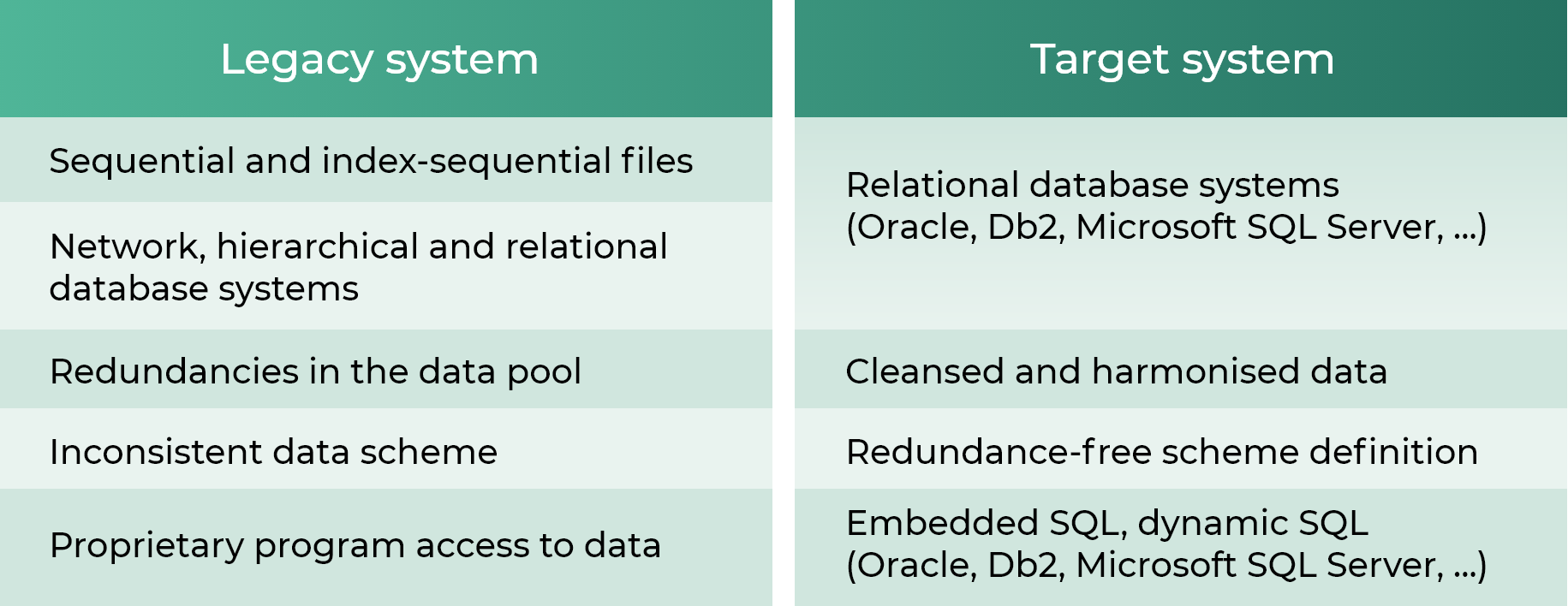
FiRe is our tool-based technology for automated migration of data pools from legacy systems into relational databases. It supports all components of a migration (data, scheme and program migration). FiRe combines scientific know-how with competence gained from successful migration projects.
FiRe TECHNOLOGY
A professional database system at the target system must be built within the framework of a legacy migration. With the FiRe technology from pro et con databases and files with different structures can be migrated to modern databases.
FiRe consists of different components whose interaction is shown in the following graphic:
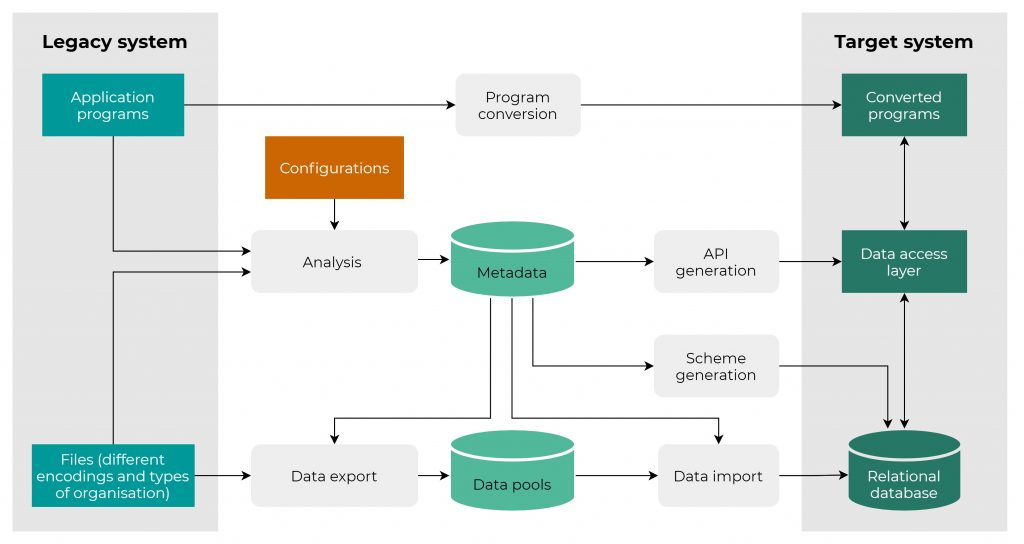 The migration takes place in the following phases:
The migration takes place in the following phases:
- ANALYSIS: A tool-supported analysis of the database is carried out on the legacy system. For this, information on structuring of the data sets from the application programs and information from the files are merged and harmonised in a repository (metadata).
-
SCHEME MIGRATION: Using the meta data the database scheme of the target system is created, where the file-oriented data management of the legacy system is mapped to a relational data management in the target system. The result is a set of table descriptions which serves as the basis for generating DDL scripts (scheme generation).
-
MIGRATION OF DATA ACCESS: File information in the converted programs of the target system is accessed by logical file operations like
OPEN,READandWRITE. However, the data is stored in a relational database system and accessed by SQL operations. The communication between the two layers is assumed by a so-called data access layer which is automatically generated with the information from the metadata (API generation). -
MIGRATION OF DATA: Export programs (reading of data from the files on the legacy system) and import programs (writing data in the relational tables of the target system) are generated from the metadata of the repository and the data relating to the scheme migration. In this process, the data is harmonised. In addition, necessary EBCDIC-ASCII conversions are taken into account.
FEATURES
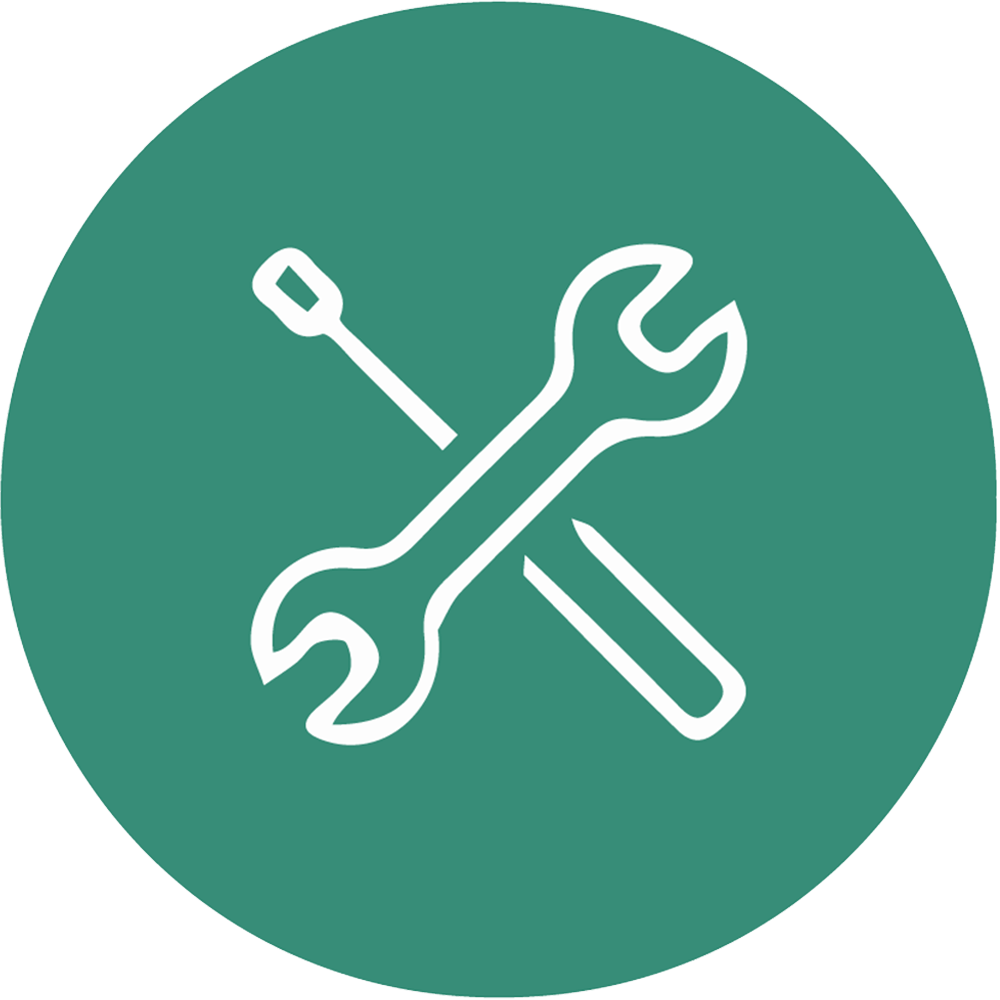
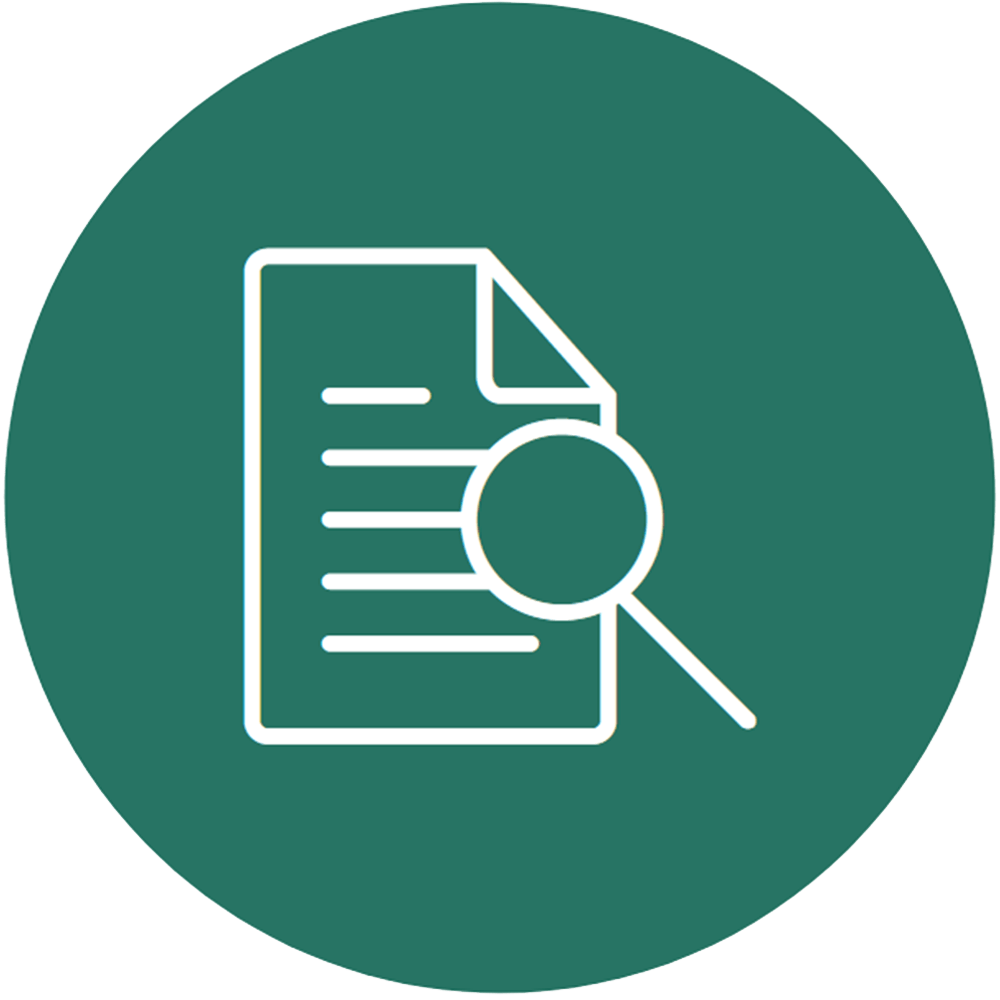
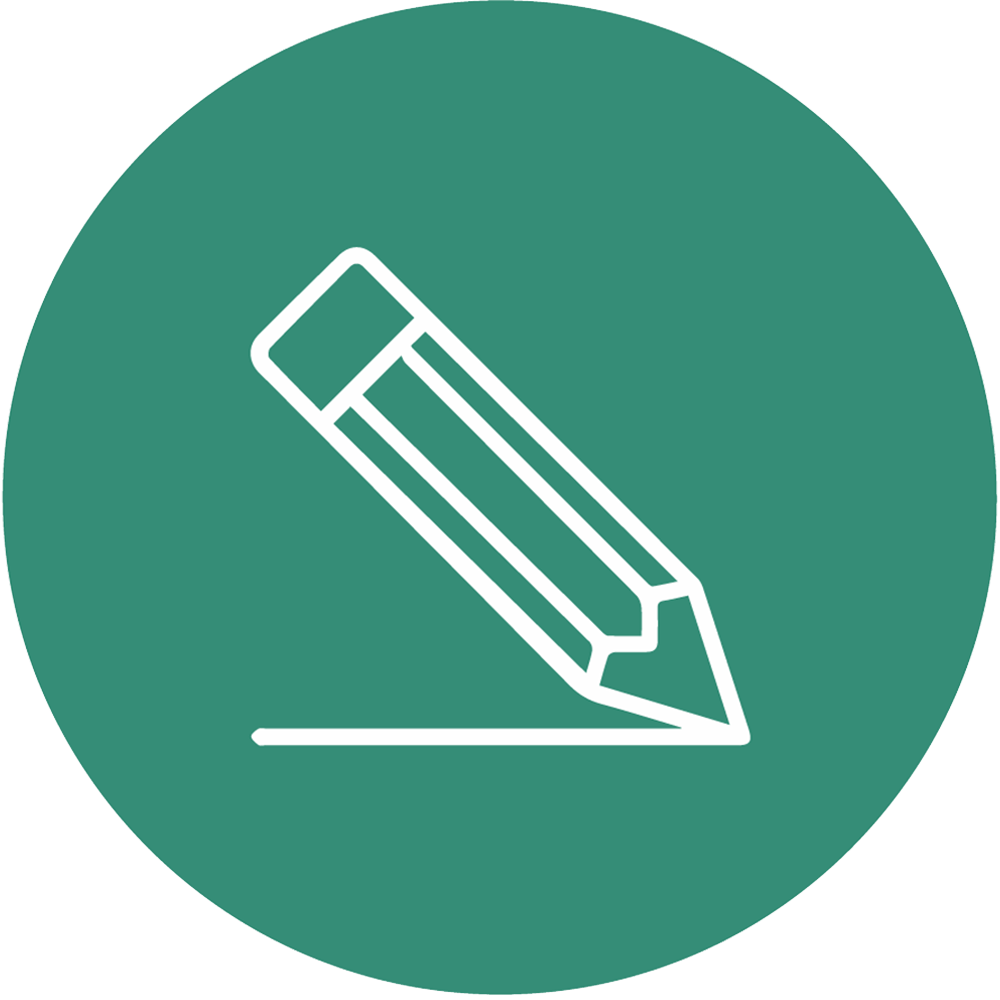
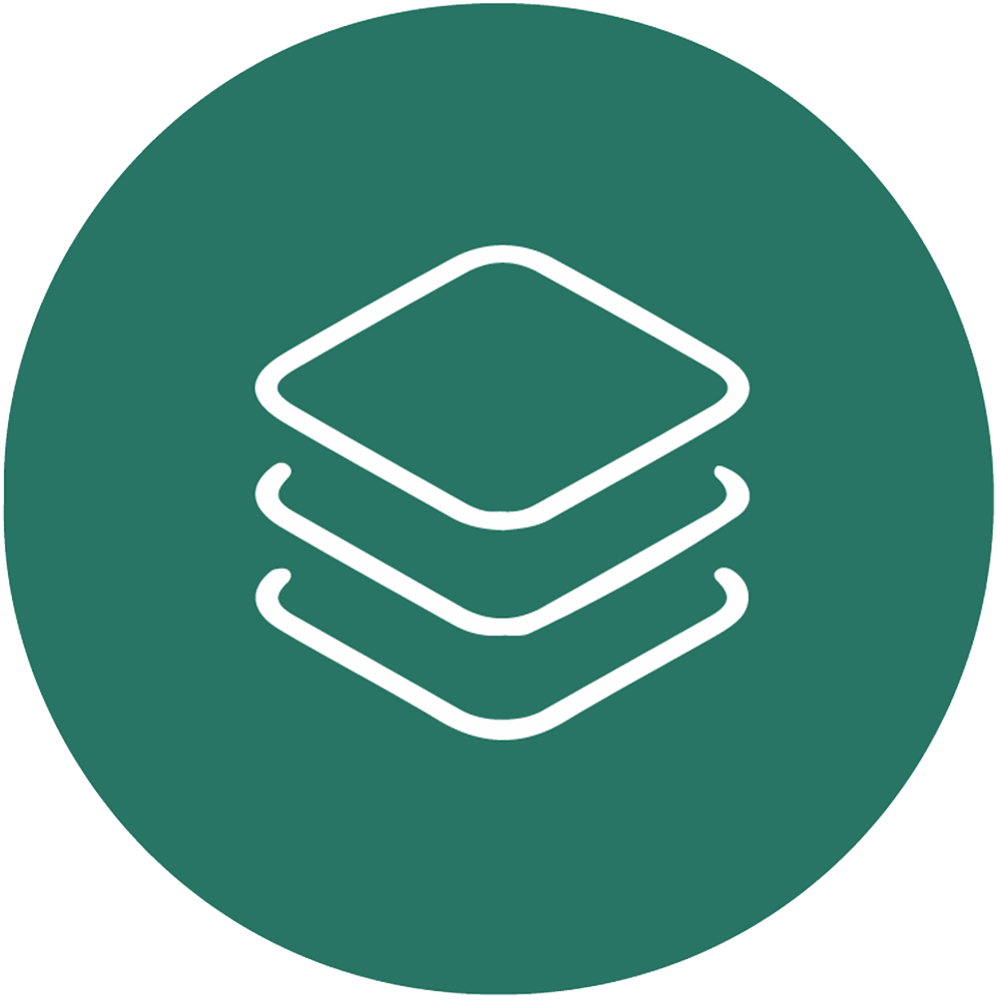
CONFIGURABILITY
During the development of FiRe, value was placed on extensive configurability. This relates, among other things, to:
- SPLITTING STRUCTURED FILES: Since structured files of the legacy system can be very complex, it may make sense to outsource them to several database tables in the target system. The data fields are selected automatically using general configuration rules as part of the scheme migration.
- CONVERSION OF DATA TYPES: The data types of the target system must harmonise with those of the legacy system. There are configuration rules for this with regard to their mapping.
- CONVERSION OF IDENTIFIERS: Identifiers cannot and should not always be transferred 1:1 from the legacy system to the target system. This affects different restrictions regarding allowed characters and different naming conventions. Various rules for name conversion can be specified — both in general and for specific data elements.
- CONVERSION OF TEXT in different, also mixed character sets, such as EBCDIC-ASCII conversion.
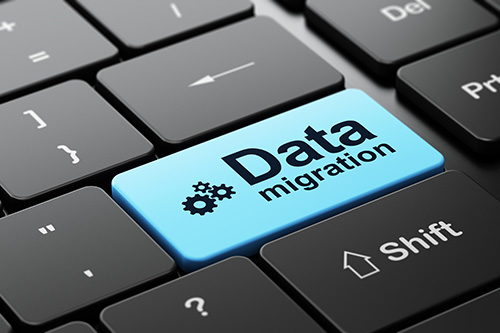
“Automatisierte Migration von Legacy-Dateien in relationale Datenbanken”
Abstract for 24th Workshop “Software-Reengineering & Evolution” 2–4 May 2022 in Bad Honnef, published in:
Softwaretechnik-Trends, volume 42, part 2, May 2022
